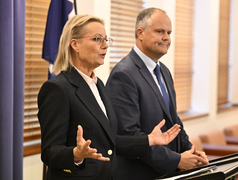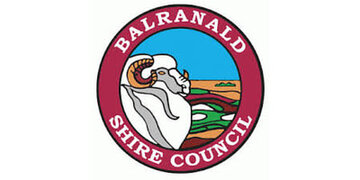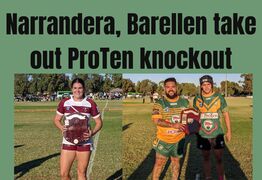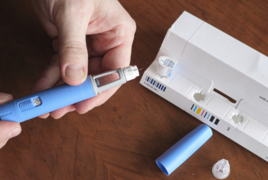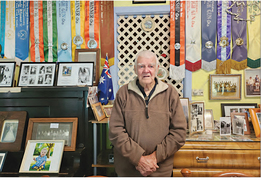Townsend Duryea - The award winning New York photographer who retired to Balranald
Krista Schade
24 May 2025, 5:00 AM
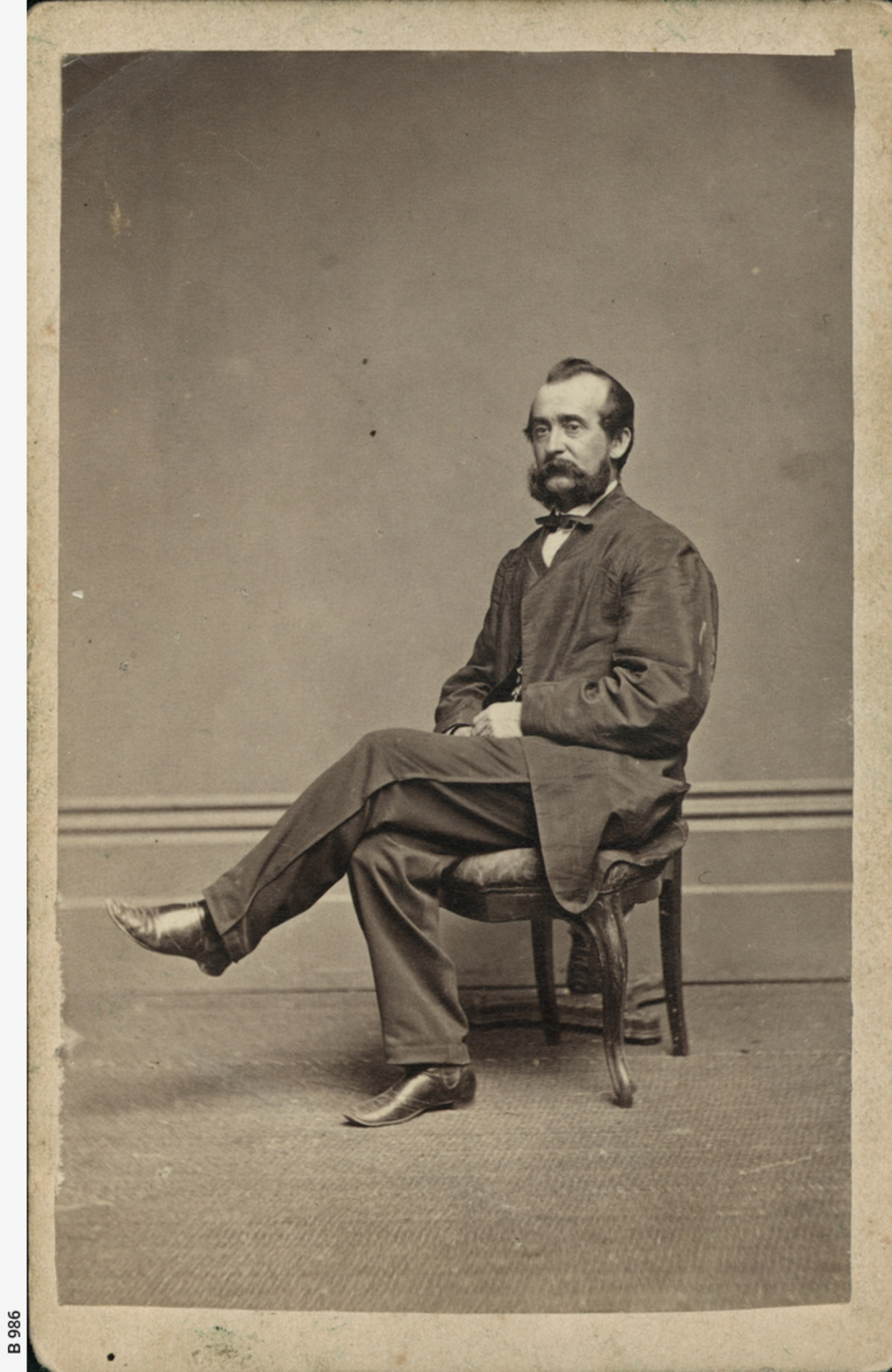 Photographer Townsend Duryea, in a portrait from the South Australian Library archives.
Photographer Townsend Duryea, in a portrait from the South Australian Library archives.How did an award-winning photographer, with royal portraits forming part of his portfolio, find his way to live out his retirement at Balranald?
Townsend Duryea, photographer, was born at Glencoe, Long Island, New York in 1823, a son of Hewlet and Ann Duryea.
He was trained as a mining engineer and his experience in the art of photography reportedly dates from 1840.
He arrived at Melbourne in 1852 at the time of the gold rush, but may have despaired of striking it rich, as around September 1853 he set up a partnership with Archibald McDonald as "Duryea and Macdonald, Daguerrean Artists" in Bourke Street, and sold their mining equipment.
In 1855 he moved to Adelaide daguerreotype rooms at the corner of King William and Grenfell Streets.
Later that year Townsend and his brother Sanford formed the partnership of Duryea Bros. They were the first photographers known to have worked outside Adelaide; by 1856 they had visited Auburn, Burra, Clare, Kapunda, Goolwa, Milang, Port Elliot and their near-by villages.
In 1857 Duryea used experience gained in America as a shipbuilder to build the thirty-foot cutter 'Coquette'.
Though the cutter was said to be for the River Murray trade, it was used mainly in racing; stakes in private challenges were sometimes £100 a side.
Duryea was also interested in copper finds near Wallaroo, and by February 1861 a fine lode of copper had been cut on section 471, the property of "Mr Duryea and others." Within a few months the Duryea Mining Association owned fifteen mineral sections in the area.
In 1863 Townsend dissolved the partnership with his brother. His studio was the most popular in Adelaide, patronised by governors, visiting dignitaries and Adelaide's leading citizens.
As well as portraits he produced many views, including several notable panoramas of Adelaide.
In 1867, Duryea was chosen as the official photographer in the royal visit of 1867. And on November 9 the Duke of Edinburgh posed at Duryea's studio for the first royal portraits made in Australia.
He produced a bound booklet to present to His Royal Highness as a souvenir of his visit to Adelaide, and was rewarded with authority to use the slogan "By Royal Appointment".
Duryea then accompanied the official party throughout the visit, travelling in a specially prepared photographer's van.
By the early 1870s Duryea's panoramas, royal portraits and prizes won in Society of Arts photographic competitions had made him famous.
The achievement for which Duryea is best remembered is his Panorama of December 1865. Taken from the "Albert Tower" of the Town Hall, Adelaide, it is composed of 14 photographs which Townsend made in the course of one day.
In 1872 he photographed almost all the surviving old colonists and made their portraits into a large mosaic comprising some 675 cartes-de-visite.
Described as 'short in build' he was extremely energetic, of 'vigorous mind and keen intelligence, his whole character bearing the impress of sterling integrity'.
His career as a photographer was cut short when his studio and entire collection of 50,000 negatives were destroyed by fire on 18 April 1875.
This loss was a serious blow to Duryea and historians alike, as the plates were the best record of early South Australian colonial life ever made.
After the fire Duryea moved to the Riverina district of New South Wales and took up a selection near Yanga Lake, called Yanga Farm.
He later moved to Parkside, Glen Emu, near Balranald, where he suffered a stroke then died on December 13, 1888, after falling from a buggy in which he was riding with his daughter.
He is buried at Parkside near Balranald.
Duryea was married twice in America: first to Madalina and second about 1852 to Elizabeth Mary Smith who accompanied him to Adelaide.
In Adelaide on 22 May 1872 he married Catherine Elizabeth Friggins.
Born in 1874 to Catherine and Townsend, Alfred Nixon Duryea settled in Balranald and had a large family.
Next came Alice, and Catherine, who was born in Balranald and married Ernest Campbell in 1903.
Arthur Duryea born in Balranald in 1879, died in Redfern in 1951.
Walter Joseph Duryea died in Horsham, in Victoria in 1972.
Several of Townsend Duryea's sons and grandsons became photographers.
Obituary - Mr Townsend Duryea
"It is with regret that we have to announce the death of Mr. Townsend Duryea, of Parkside, Glen Emu, which took place at his residence early on Thursday morning last.
It appears that Mr. Duryea and his daughter drove over to Juanbung station on Wednesday forenoon, and while returning home the same afternoon the horse stumbled and fell, throwing the occupants out.
Miss Duryea was stunned by the fall, but soon recovering got up, and under her father's instructions released the animal. Mr. Duryea was sitting down close to the wheel, not appearing to be much the worse; but by the time his daughter got the horse into the trap again and went to assist her father, who was paralysed, into the gig, he went off into a faint, and it was some time before his daughter could get him round again.
However, when he had sufficiently recovered Miss Duryea got him into the trap, and they drove home. On getting inside the house Mr. Duryea, who was visibly very weak, again fainted, and remained in a very precarious state until 2.30 next morning, when death relieved him from his sufferings.
Assistance was sent for to Sunnyside, where Mr. Pritchard, who has had considerable medical experience, was staying, but though that gentleman remained with him to the last he was unable to bring him round.
Mr. Duryea was an old and much respected resident of this district, having come from Adelaide about 14 years ago, when he was in the photography business, and selected near Yanga Lake, what is now known as Yanga farm, on which property he was most successful in producing a good crop of hay even in the worst of seasons.
About two years ago he took up a homestead lease on Glen Emu run, where he was residing at the time of his death.
The deceased was 65 years of age, a son of the late Hewlet Duryea, of Glencoe, Long Island, where he was born.
Mr. Duryea was one of the foundation members of the Balranald Lodge, and the oldest royal arch mason in this district, in which now only two remain.
The deceased was a man of vigorous mind and keen intelligence, his whole character bearing the impress of sterling integrity."
The Riverina Recorder (Balranald's newspaper), December 19, 1888.
What are cartes-de-visite and daguerreotype rooms?
Cartes-de-visite are small, calling card-sized photographs, typically black and white, that were popular in the mid-19th century. They were invented in 1854 by André Disdéri, who developed a method of producing multiple images on a single glass plate, making portrait photography more affordable and accessible.
Daguerreotype rooms were the studios where early photographs, specifically daguerreotypes, were produced. These rooms housed the equipment and chemicals needed to create the unique, mirror-like images that were a hallmark of this early photographic process. Daguerreotype rooms were often found in cities and served as commercial establishments, attracting clients who desired portraits or likenesses of themselves or loved ones.
NEWS
SPORT
RURAL
